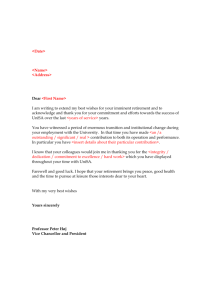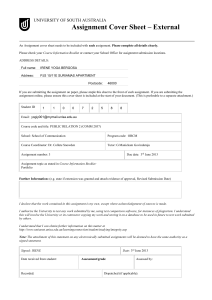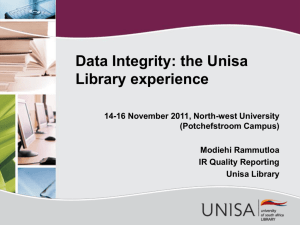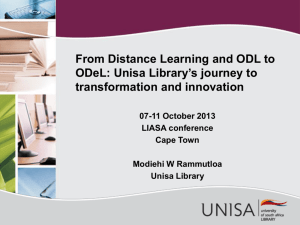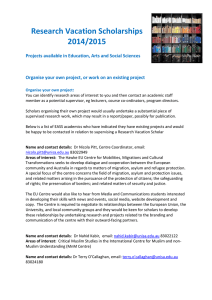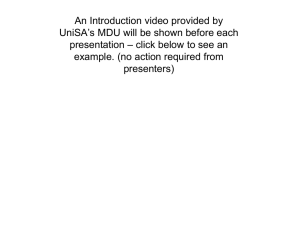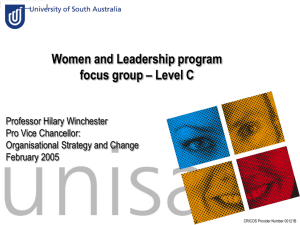Response 2010
advertisement
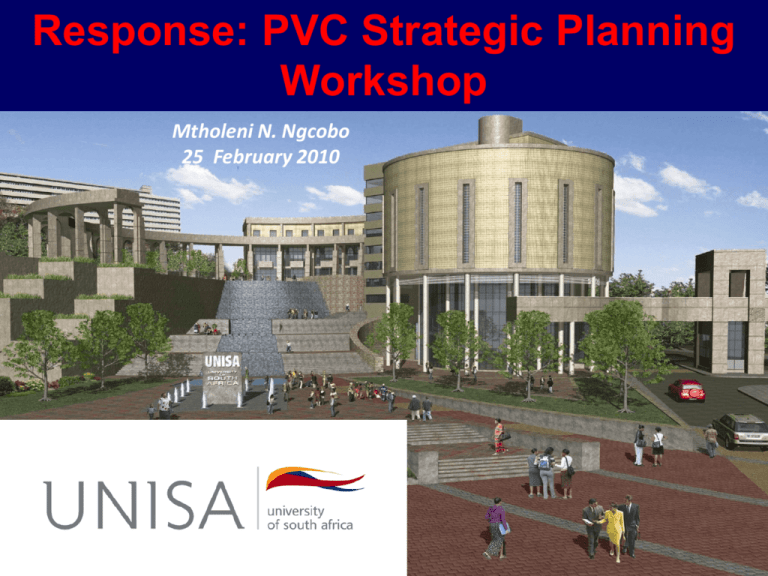
Response: PVC Strategic Planning Workshop Mtholeni N. Ngcobo 25 February 2010 Outline • Academic transformation • What is Unisa’s doing right or wrong? • What needs attention and improvement Academic transformation: teaching and learning, student support and service to students • • • • • • • • A new way of thinking Unisa seeks to play a leading role in increasing access to higher education for the underprivileged communities The emphasis is on revitalisation and innovation in order to meet new challenges Transformation challenges a status quo, but on the other hand is also a challenge as it seeks to bring major change in academic activities It meets with resistance from those who would not want to be moved from their comfort zones While it is a challenge, and while it challenges the status quo, it itself is being challenged for bringing change Some staff members, mostly senior ones, think that it is this new concepts that has created major problems we are faced with today The concept is embraced by younger academics as they have little or even no experience about what happened in the past, although the senior colleagues warn us that ‘you will soon learn how things are done here’ What is Unisa’s doing right or wrong? • • • • • • • • • • • • • • • • A good thing is that Unisa puts emphasis on multiple modes of delivery and learner centredness It aspires to the use of work and industry integrated learning Unisa provides greater flexibility to students through: Written media: instructions and information in the form of tutorial letters – with interactive activities Communication via telephone Face-to-face meetings (for course content facilitation) and group learning (for collaborative discussions, the exchange of learning experiences and overcoming students’ sense of isolation) It has a leading edge information and communication technology architecture Audio-visual media Mixed media Video conferencing and satellite broadcasting bridge a distance between a lecturer and students Regional centres are important as students may have easy access to them rather than coming to Pretoria (centralisation vs. localisation) Affordability, access and openness become a language of the angels to some staff members – there is no precision in defining these concepts The problem of work load has not been tackled – how to balance teaching and learning, research and community engagement without compromising the quality of teaching? Most younger academics are affected The idea of various teaching delivery and assessment methods - confusing as some are presented as additional methods rather than essential part of ODL Career guidance is lacking to most students – from registration to course selection Access to computers and to ICT has not been investigated adequately – these must be readily available to students to provide asynchronous communication between student and peers and student and tutor/lecturer to facilitate learning at a distance What needs attention and improvement • • • • • • • • • • • Supporting our students at a distance can help to affect their achievements However, we need to ascertain the support that is appropriate to resolve their needs We need to know about their experiences in education and learning and other areas of their lives Consistency in using appropriate support services is highly recommended We need to define clearly the parameters of openness. In other words how much open should we become? Since the foundation is very important, how do we make sure that we prepare our students as early as possible in their first year of entry at UNISA? How do we make sure that there is an internal cooperation among the staff members? e.g. the young and the old In our endeavor to use technology, which one will be relevant for our students in deep remote areas? This needs to be integration approach Business model and tuition model must be adapted to meet changing needs and competition While there is a need for greater flexibility for students, adequate assessment is also needed to ensure quality We must also be sensitive to the fact that most students lack essential IT facilities !


